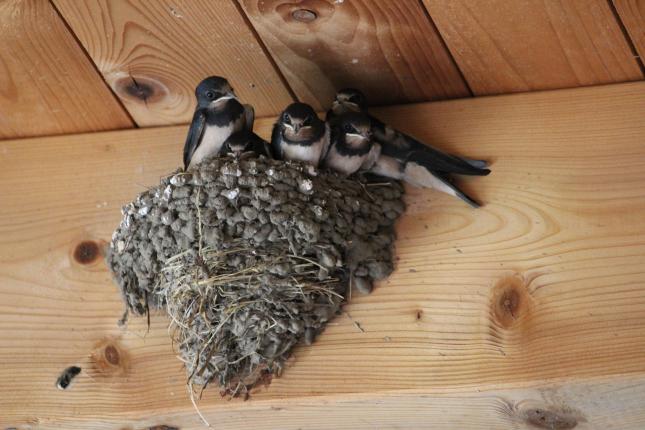Bird of the Month - Barn Swallow
With their distinctive forked tails, sleek blue-black plumage, and acrobatic flight, barn swallows (Hirundo rustica) are among the most beloved and recognizable bird species worldwide. These elegant creatures are not only admired for their beauty but also revered for their remarkable aerial abilities and intriguing behaviors.

Barn swallows are highly adaptable birds, found in a variety of habitats across continents, from open fields and grasslands to marshes and urban areas. They are renowned for their incredible migratory journeys, traveling thousands of miles each year between their breeding grounds in North America, Europe, and Asia, and their wintering areas in Central and South America, Africa, and Southeast Asia. They are the most abundant species of swallow in the world.
While Barn Swallows don't come to seed or suet feeders you can still attract them by providing a garden with ample native plants - and native bugs, they may also take ground up egg shells place on an open tray feeder. If you have a good outbuilding with overhanging eves or an easy way to get inside you may be able to encourage swallow nesting, especially if there is a good source of mud nearby.
These agile flyers build their cup-shaped nests from mud pellets, attaching them almost exclusively to man-made structures such as the eaves of barns, bridges, or buildings. Mated pairs work together to construct their nests, lining them with feathers for insulation. Remarkably, barn swallows show high fidelity to their nesting sites, often returning year after year to the same location. Barn Swallow parents will sometimes use babysitters, often siblings from earlier clutches but occasionally unrelated juveniles will help feed their young as well!

During the breeding season, barn swallows perform elaborate aerial displays to attract mates, showcasing their agility and speed in breathtaking flight patterns. Once paired, they raise multiple broods of chicks throughout the summer months, diligently feeding them insects caught on the wing.
The oldest known Barn Swallow was 10 years old!

